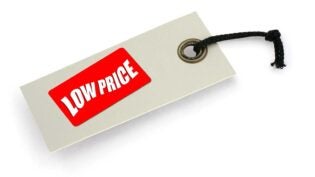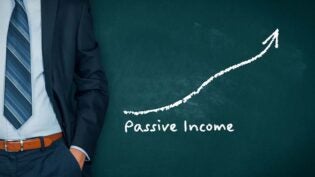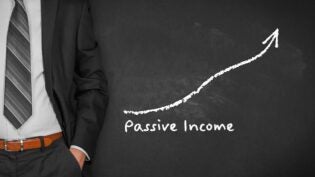
There is a growing awareness in retail that a once surefire way to save the day is gone forever.
When all else failed, retailers could always compete on price. Those days, in the words of the old song, are dwindling down to a precious few.
And that represents a radical change.
For as long as most of us can remember, price was an easy, albeit painful, lever to pull for retailers facing declining traffic or stiff competition. Cutting prices appealed to consumers, was easy to implement, and could affect behavior (thus changing revenue numbers immediately).
Today it is a short-term strategy that is working less and less often and becoming a Band-Aid with often-fatal implications.
With continued disruption from e-tailers, price is an increasingly difficult game for retailers to play. To get a sense of the extreme discounts coming from Chinese companies, for example, just check out Aliexpress.com or Lightinthebox.com.
Other significant pricing threats come from those companies that can play in retail but aren’t concerned with margins since retail isn’t where they make their money; Alibaba (also owns Aliexpress) is one such example.
Imagine a future where multichannel retailers can no longer compete on price. How will they survive?
The short answer is most will struggle. You don’t have to look any further than JCPenney. The mass market retailer had conditioned customers to price “deals.” When Ron Johnson became CEO in late 2011, he tried to eliminate most sales and stocked the stores with brands designed to appeal to a younger audience with more money to spend. The strategy failed miserably because long-time JCPenney customers felt alienated, and younger customers did not appear to buy the new approach—literally. It took just 17 months for Johnson to lose his job and for former CEO Mike Ullman to be rehired.
Related Article: When Profits Collapse, Don’t Turn to Discounting
In the aftermath of Ullman’s rehiring, the voice-over on the JCPenney ad campaign said, “It’s no secret, recently JCPenney changed. Some changes you liked and some you didn’t, but what matters with mistakes is what we learn. We learned a very simple thing, to listen to you.”
Are you listening?
The leaders of prominent retailers say they are desperate to hear something, ANYTHING, from customers that they can convert into a compelling new product, service or business model.
But are they really? The reality is that regardless of industry, it is incredibly difficult to change the way you do business.
Einstein famously said, “One cannot expect to solve a problem with the same level of incompetence that created it.” And that is the situation that most retailers find themselves in. When customers ask for something different, most companies simply choose not to hear them. At best, they are skeptical of what will happen if they make a change, however subtle.
We’ve seen this kind of skepticism in the past—and it doesn’t go well. Those in the travel agency business were skeptical until Orbitz, Expedia, Travelocity, et al came along. And Uber wasn’t viewed as a threat five years ago to those in the taxi/car service businesses.
(Fast-forward a year or two. What if the Uber technology was applied to the package delivery business? I wonder if FedEx or UPS is worried about what local delivery—by everybody with a cellphone—would do to their business?)
So what is a retail leader facing an inflection point to do when competing on price is no longer an option? Companies like Apple, Best Buy, Amazon and The Container Store all provide leaders with road maps of how to change the business you are in today.
The secret is to start with the needs of your consumer—to really listen as JCPenney advises—and then look to create unique, proprietary, profitable ways to create offerings to serve these needs. To start, there are four categories that are ripe for innovation and present excellent opportunities for retailers to reduce their reliance on price:
- Customer Experience—Those primarily focused on price can’t create a multichannel experience that is differentiated. Nothing provides pricing power like great experiences as a result of knowledge, advice, seamlessness, atmosphere, etc. Apple started by making the user experience on your new electronic device a pleasure and extended that mastery into retail by once again creating something everyone was immediately trying to replicate.
- Service—Those providing excellent after-sales service and product support give customers a compelling reason to purchase with them versus going for the cheapest option. Best Buy launched Geek Squad to take the pain out of installing complicated and expensive electronics.
- Convenience—Customers are always willing to pay for convenience, and the opportunity to improve convenience in the customer journey is nearly unlimited. You want your packages tomorrow? You want to know what other people bought with that product? You want to know about other things you’ll probably like? Amazon says, “no problem.”
- Assortment—Most think expansion, but it might mean focused assortment, or quality, or seasonality. The Container Store is the place to go for, well, containers. If your tagline contains the words “the place to go for… ,” you have created a defensible advantage.
As an example of what the changing face of retail could look like, just check out Thisisstory.com. You’ll find a retailer that has combined the concept of a magazine, with the essence of a retail store/site, and the benefits of community. This is a highly innovative retailer that will be far more resistant to the effects of rapid commoditization.
The takeaway here is clear for retailers, and the rest of us for that matter: Start with your customers and your employees to understand their insights. Then apply the rigor of the innovation process to uncover the opportunities.
This article was originally published by FreeTheIdeaMonkey
Published: February 2, 2015
2988 Views
2988 Views












